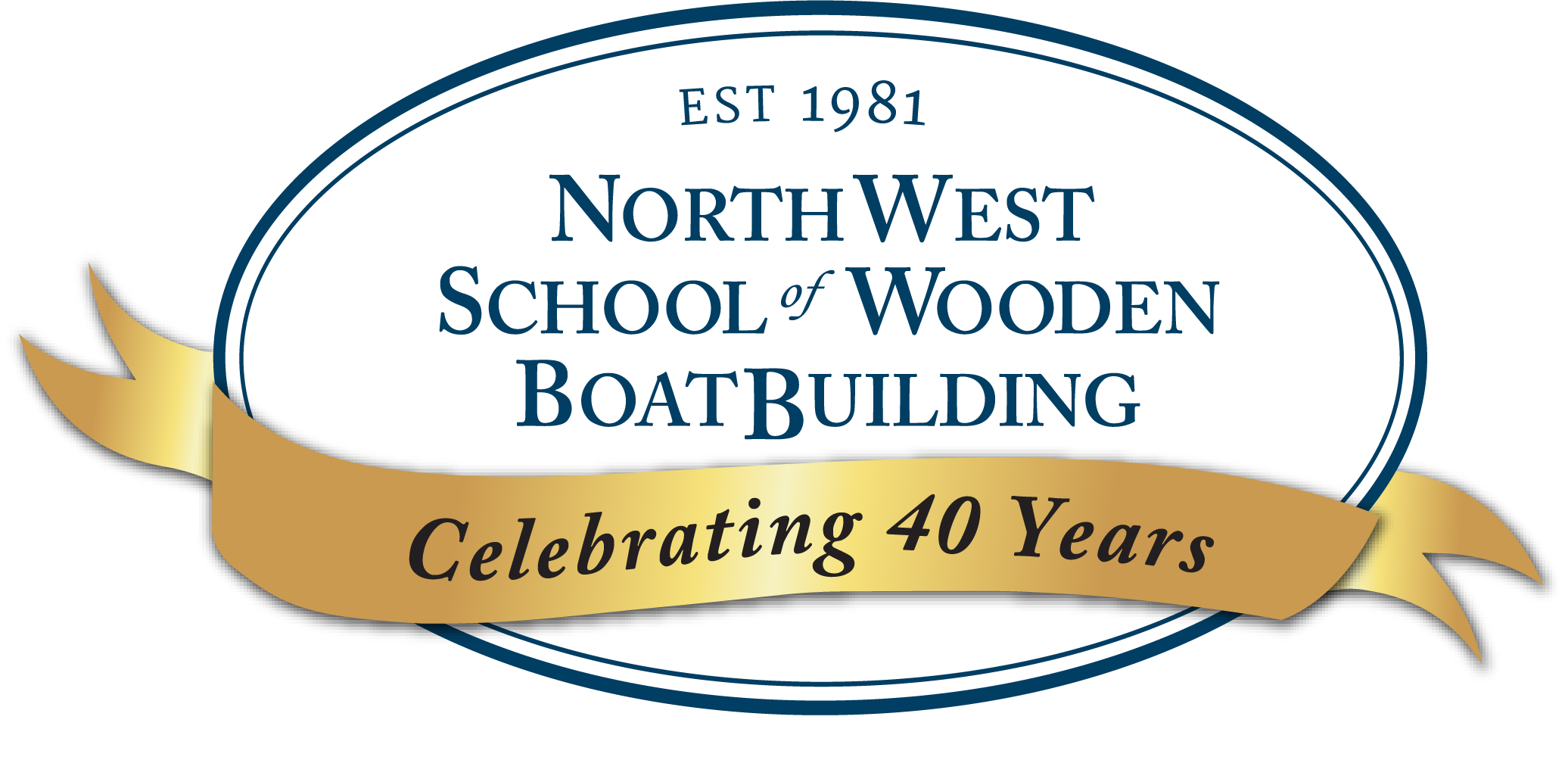
Instructor Sean Koomen (in dark orange shirt) leads his class long-boarding the Sentinal-24 hull. Longboarding the hull is done with a long board onto which sandpaper is fastened. The board bridges minor imperfections in the hull and helps to being the hull to a uniform level that can support a high gloss finish.
This is the first boat in the Sentinal-24 class of designed by Stephens/Waring Yacht Design of Belfast, Maine (SWYD) www.stephenswaring.com .
The Sentinal-24 class is designed to be a comfortable and stylish sloop with the beautiful lines of yesterday’s classics paired with modern underbody design and state-of-the art rigging.
This vessel represents Stephens Waring Yacht Design’s signature approach to distinctive, fun and high performance sailing with more than a touch of historic grace.
 The boat was designed for commercial production. Thus far, Stephens Waring Yacht Design has licensed only the Northwest School of Wooden Boatbuilding to build the design in modern cold-molded wood construction within the School’s Contemporary Boatbuilding program. The School will call their model, hull number one, the Sentinal class-24, and expects to launch Whisper late in the summer of 2013 for display at the Wooden Boat Festival in Port Townsend WA in September, 2013.
The boat was designed for commercial production. Thus far, Stephens Waring Yacht Design has licensed only the Northwest School of Wooden Boatbuilding to build the design in modern cold-molded wood construction within the School’s Contemporary Boatbuilding program. The School will call their model, hull number one, the Sentinal class-24, and expects to launch Whisper late in the summer of 2013 for display at the Wooden Boat Festival in Port Townsend WA in September, 2013.
The cold-molded hull is just under 24 feet long overall, with 19 feet 4-inches on the waterline and a maximum beam of 8 feet on a draft of 4 feet 4 inches, displacing 2,850 with two crew. The sloop will carry 300 square feet of sail on a modern rig.
The open cockpit measures over 8 feet long, and was designed for a party of four with plenty of elbow room. The open cockpit layout is standard and combines a commanding tiller steering arrangement for ultimate steering feel, though an alternate deck arrangement has been drawn to satisfy those looking for a small cuddy and enough accomodation for an overnight excursion. The 24 will accomodate wheel steering with the modified cockpit as an upgrade.
Clean line management leads to the simplified control and trimming of sail, all ergonomically situated forward at the base of the mast. This results in a spare and restrained layout to ensure the boat is as easy as possible to handle. The standard rig is a backstay-less rig using a square-topped mainsail. For sailors who are not yet believers in square-topped mains, a more convention al sloop arrangement is offered by Stephens Waring Yacht Design, since the Signature-24 is a great platform for each owner’s customized choices.
The Northwest School of Wooden Boatbuilding is located in Port Hadlock WA, on the Olympic Peninsula, and is a private, accredited non-profit vocational school.
Our mission is to teach and preserve the fine art of wooden boatbuilding and traditional maritime crafts. We build both commissioned and speculative boats for sale while teaching students boatbuilding the skills they need to work in the marine trades.
You can find us on the web at boatschoolstore.com .
You can reach us via e-mail at [email protected] or by calling us at 360-385-4948.
 Canadian residents should visit www.canlearn.ca to find out if they are eligible for any of the Canadian student loan programs.
Canadian residents should visit www.canlearn.ca to find out if they are eligible for any of the Canadian student loan programs. Canadian residents should visit www.canlearn.ca to find out if they are eligible for any of the Canadian student loan programs.
Canadian residents should visit www.canlearn.ca to find out if they are eligible for any of the Canadian student loan programs.










